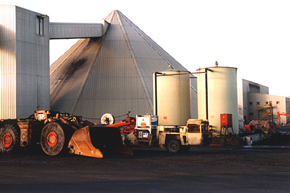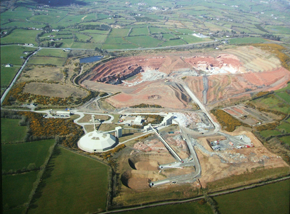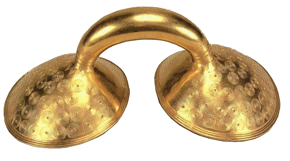The discovery and development of the Galmoy Zinc Ore Bodies, by Professor Conroy and his colleagues, led to the revival of the Irish base metal industry and to Ireland becoming an international zinc province.
Ireland has an established mining tradition, actively encouraging governments in both the Republic of Ireland and Northern Ireland, user-friendly legislation, excellent infrastructure and pragmatic environmental controls. There are no restrictions on foreign investment in Ireland and no difficulties with capital repatriation.
Prospecting licences give the exclusive right to seek a mining licence. In order to receive a mining licence applicants are required to obtain planning permission and an Integrated Pollution Control Licence (IPCL). For a large deposit containing state owned minerals (e.g. gold) the Irish Government has indicated that the time scale in obtaining these permits in the Republic of Ireland should be within eighteen months.
 |  |
| Major Zinc Mine at Galmoy, County Kilkenny | Open Pit Gypsum Mine, County Monaghan |
Extensions to mine planning permissions have been granted to existing mines in recent years.
The Company proposes to develop a conventional open pit gold mine on 20% of one of these major gold targets – Clontibret in County Monaghan. The County has a history of mining including historic lead mines and an Antimony mine in what was known as the Armagh – Monaghan Mining District. A large open pit Gypsum mine is currently in operation in County Monaghan.
Professor Conroy and his colleagues, as well as having been involved in the major zinc discovery at Galmoy in Ireland, were also founder members with Sumitomo of the Stoneboy consortium, an exploration group which led to the discovery of the Pogo gold deposit in Alaska, now in production as a world class gold mine.
He and his colleagues in Conroy Gold and Natural Resources plc (“Conroy Gold”) considered, on geological and historic grounds, that significant potential for gold existed in Ireland as well as the possibility of further large base metal discoveries.
Noting the presence of gold mineralisation associated with historical antimony workings at Clontibret in County Monaghan in a geological terrain known as the Longford–Down Massif Conroy Gold applied for prospecting licences.
 |  |
| Two pound gold cloak clasp, found in Clones, County Monaghan, 700 BC | Gold sun disc, found also in County Monaghan, 2200-2000 BC |
The Company proposes to develop a gold mine on of one of these major gold targets identifed to date. The area has a history of mining and was known as the Armagh–Monaghan Mining District. The mines included lead, zinc and copper mines as well as the antimony mine. A large open pit gypsum mine is currently in operation in County Monaghan.
